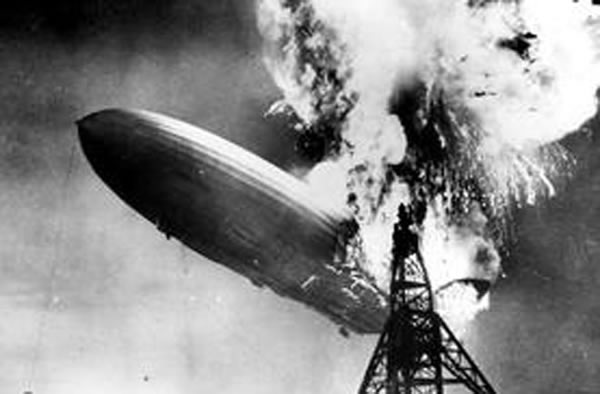Static Electricity Doomed the Hindenburg, Finds Report
Static Electricity Doomed the Hindenburg, Finds Report
A British inventor claims to have solved the long mystery over what caused the infamous Hindenburg disaster — static electricity.
The Hindenburg was an 804-foot Germany airship filled with highly flammable hydrogen gas. For a year after launching in 1936, the novel airship traveled more than 250,000 miles and ferried more than 1,000 people between Germany and the United States.
But on May 6, 1937, as the ship was landing in Lakehurst, N.J., tragedy struck when the ship burst into flames. Thirty-five out of the 100 passengers on board died. Since that fateful day, many theories have been put forth to explain the disaster, including sabotage, burning rocket fuel and St Elmo’s fire.
Now British TV host and inventor Jem Stansfield says he has found the definitive cause. To settle on his theory, Stansfield created three hydrogen airship models and then blew them up as part of a Channel 4 documentary. He and historian Dan Grossman also analyzed reports from Germany and the United States.
“We blew them up in ways that corresponded to theories about the Hindenburg disaster. We looked for explosions that looked most like the way the Hindenburg went down — as airships burn, their buoyancy changes, so it’s quite distinctive,” Stansfield said.
The team found that the airship had a new waterproof coating the day it docked in New Jersey. The coating meant water pooled over its skin and these pools picked up electric charge due to the weather and a rushed landing.
“When the landing ropes attached, the charge within the framework caused sparking,” he said.
The spark ignited the ship likely due to a pre-existing gas leak. Flames shot into the airship’s ventilation tubes and the Hindenburg was tragically seared into history.
Mar 9, 2013 10:11 AM ET by Amanda Onion












